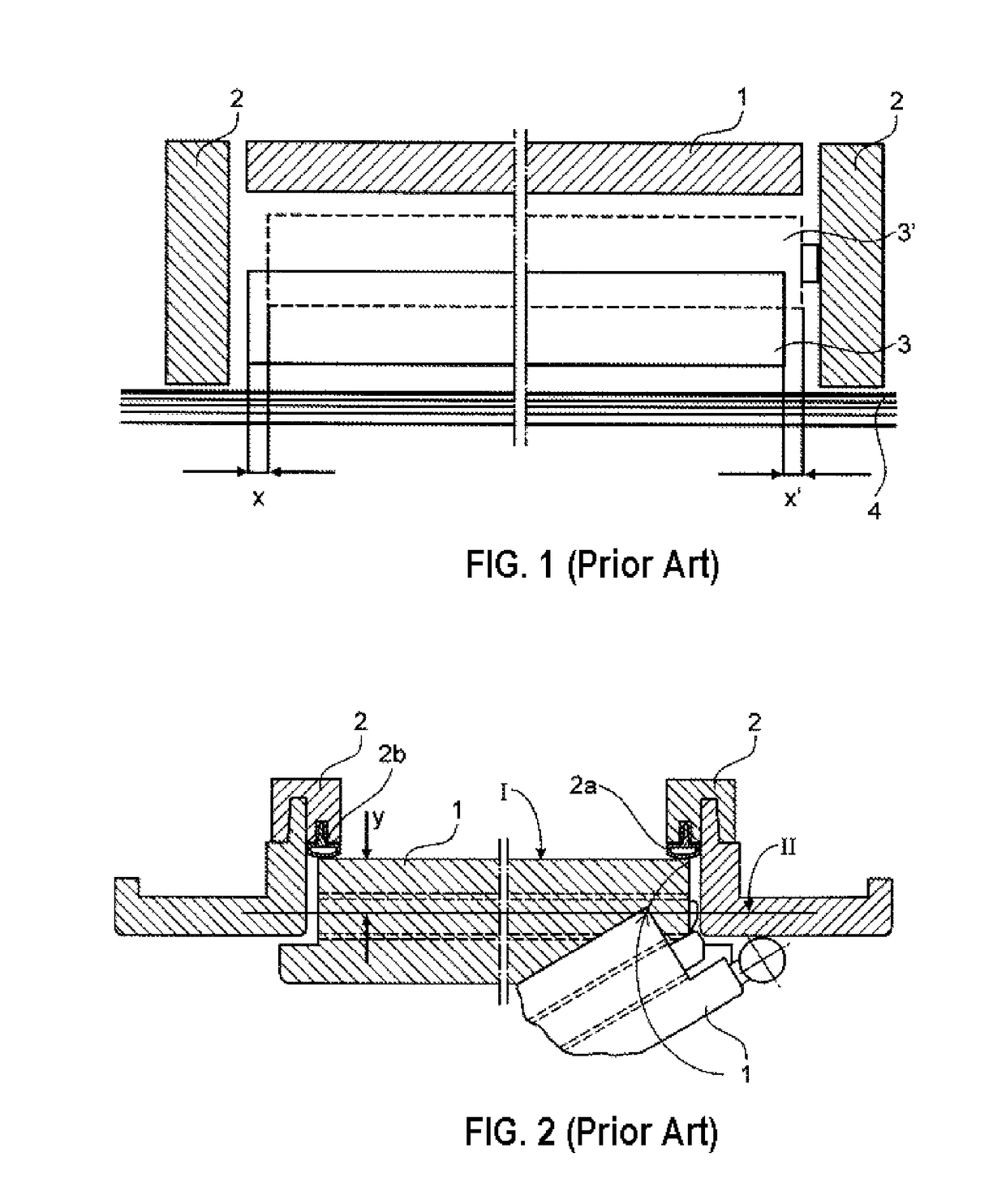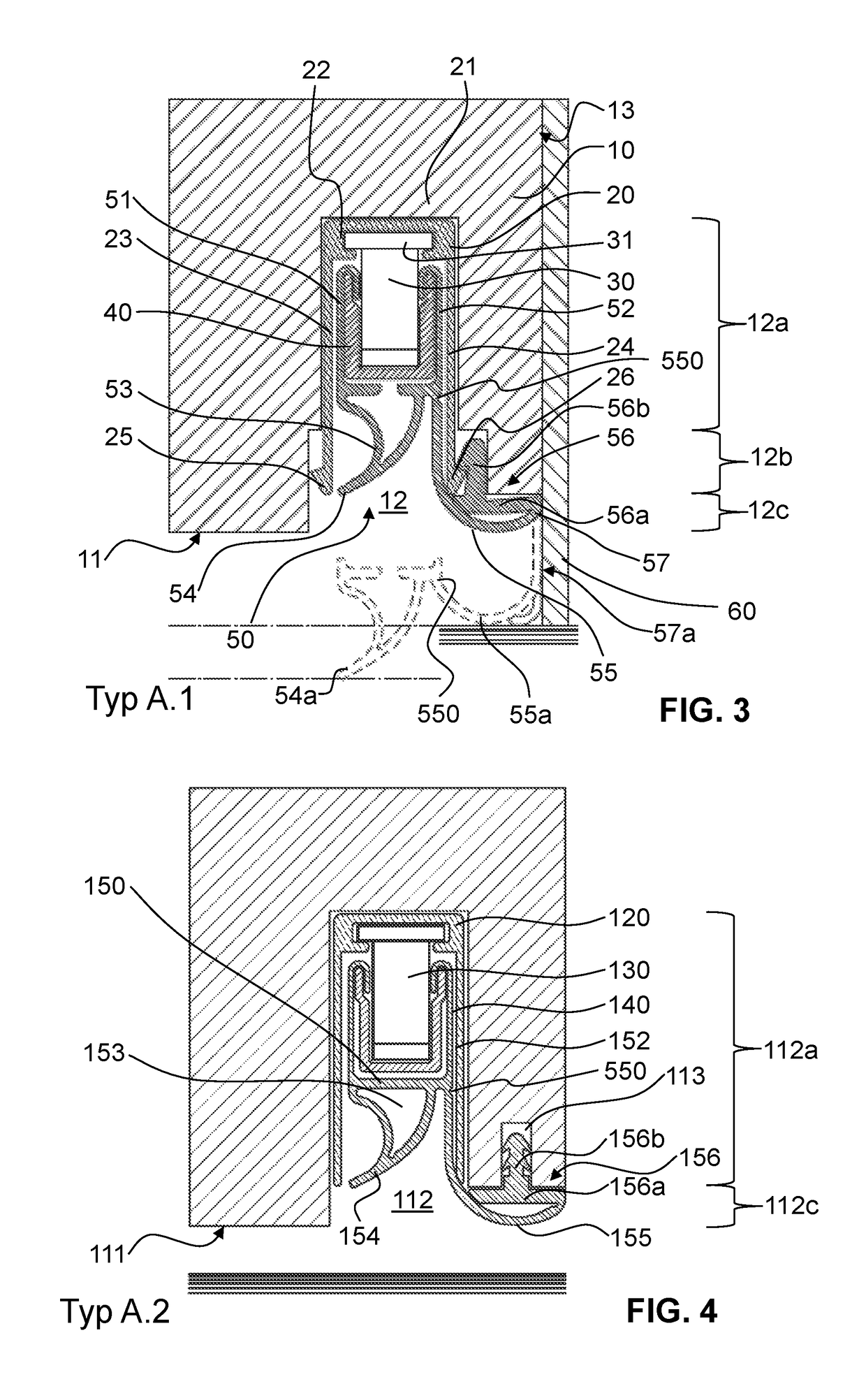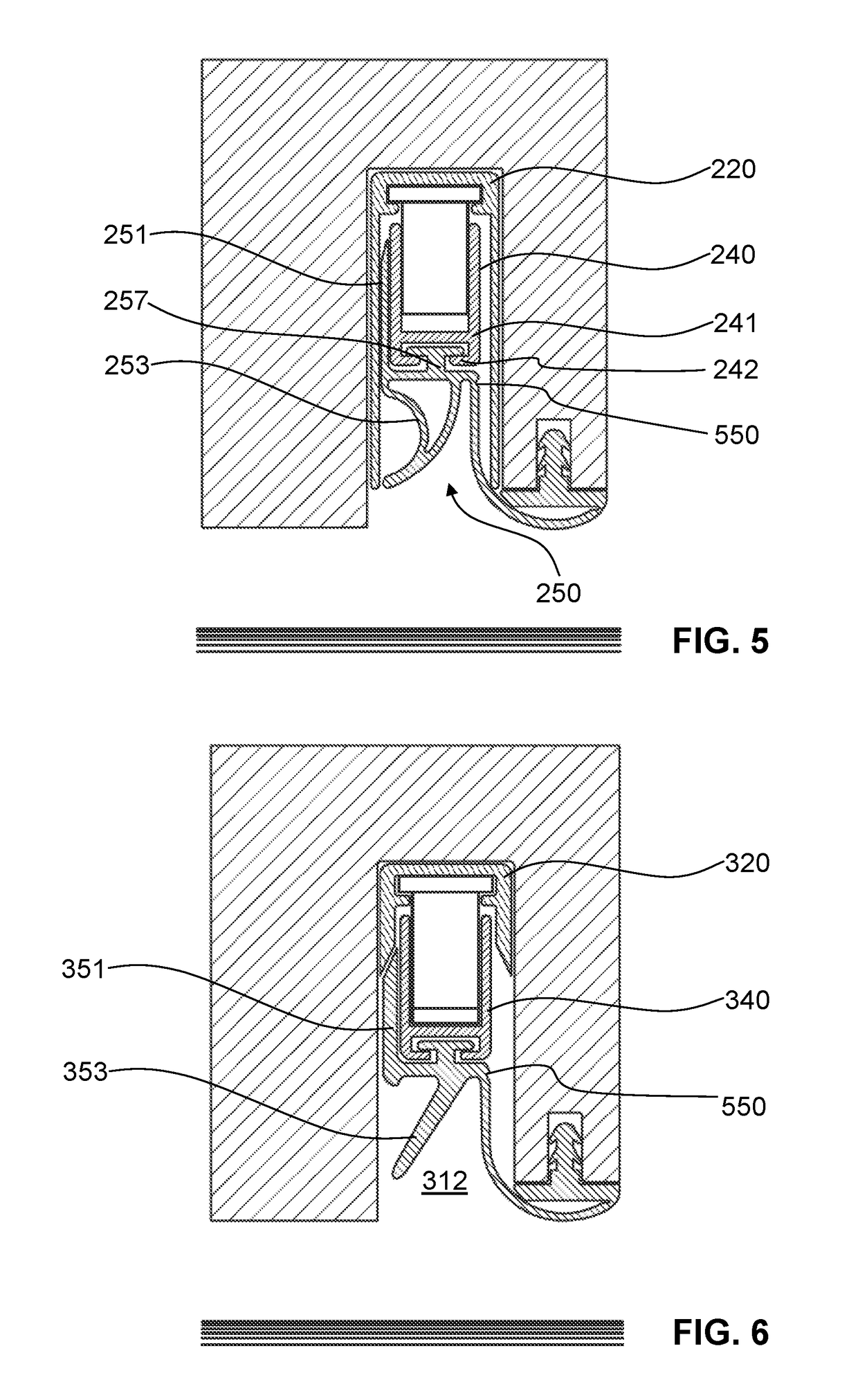Door seal with two sealing planes
a sealing plane and door seal technology, applied in the direction of sealing arrangements, etc., can solve the problems insufficient sealing of the gap between the door and the frame, and affecting the sealing effect over the entire floor gap, etc., and achieve the effect of high degree of wear
- Summary
- Abstract
- Description
- Claims
- Application Information
AI Technical Summary
Benefits of technology
Problems solved by technology
Method used
Image
Examples
first embodiment
[0064]FIG. 3 shows the door bottom seal according to the invention in a fitted situation in a door. The door bottom seal is depicted in a raised state, and at the same time parts of the sealing element are also shown in a lowered state.
[0065]A door in which the door bottom seal is fitted has, in the lower edge 11 thereof, a groove 12 which is milled in the longitudinal direction of this edge. The groove 12 is designed in three stages: in a deep portion 12a, the groove is designed to be relatively narrow, a middle portion adjoining the deep portion in the direction of the door lower edge 11 is wider than said deep portion on both sides. In a lower portion 12c adjoining said middle portion 12b in turn in the direction of the lower edge of the door, the groove is widened in such a manner that it constitutes a step which extends to the frame as far as the stop surface and front door leaf surface 13 of the door. The door lower edge 11 is therefore arranged higher on the stop side than on...
second embodiment
[0079]In the second embodiment according to FIG. 4, a sealing hollow chamber profile portion 153 which likewise bears a sealing lip 154 pointing obliquely downward is formed. Said sealing hollow chamber portion 153 is of closed design and thereby has a lower degree of elasticity and exerts a higher contact pressure force for the second sealing line.
[0080]A sealing leg arc 155 extends in the same manner from the lower end of a leg arc 152 of the sealing element as far as that outer end of a fastening portion 156 which faces the door stop plane. The fastening portion 156 in turn has a horizontal base 156a in which, however, in contrast to the first embodiment, a profile portion 156b is formed centrally, said profile portion by means of corresponding barb profiles into a separate groove 113, which is arranged next to the groove 12, in the lower edge 111 of the door leaf.
[0081]FIG. 5 shows a third embodiment of the door bottom seal according to the invention which differs from the secon...
third embodiment
[0082]Furthermore, the sealing element 250 of the third embodiment does not have any legs which point upward and are turned over at their end, as is provided in the two embodiments above for fastening the sealing element. Instead, an individual leg 251 is formed only on the side facing away from the stop side of the door, said leg not being turned over at its upper end, but rather ending with a bevel. This individual leg serves in order to produce a sealing effect between the seal receiving element 240 and the fastening element 220 and therefore to prevent bypassing of the sealing lines formed by the sealing element with the floor.
[0083]FIG. 6 shows a fourth embodiment of the door bottom seal according to the invention which differs from the previously explained, third embodiment in two functional aspects. Firstly, the fastening element 320 of this fourth embodiment is designed with shorter legs, and therefore the sealing leg 351, which is formed on one side, of the sealing element ...
PUM
| Property | Measurement | Unit |
|---|---|---|
| distance | aaaaa | aaaaa |
| distance | aaaaa | aaaaa |
| height | aaaaa | aaaaa |
Abstract
Description
Claims
Application Information
 Login to View More
Login to View More - R&D
- Intellectual Property
- Life Sciences
- Materials
- Tech Scout
- Unparalleled Data Quality
- Higher Quality Content
- 60% Fewer Hallucinations
Browse by: Latest US Patents, China's latest patents, Technical Efficacy Thesaurus, Application Domain, Technology Topic, Popular Technical Reports.
© 2025 PatSnap. All rights reserved.Legal|Privacy policy|Modern Slavery Act Transparency Statement|Sitemap|About US| Contact US: help@patsnap.com



